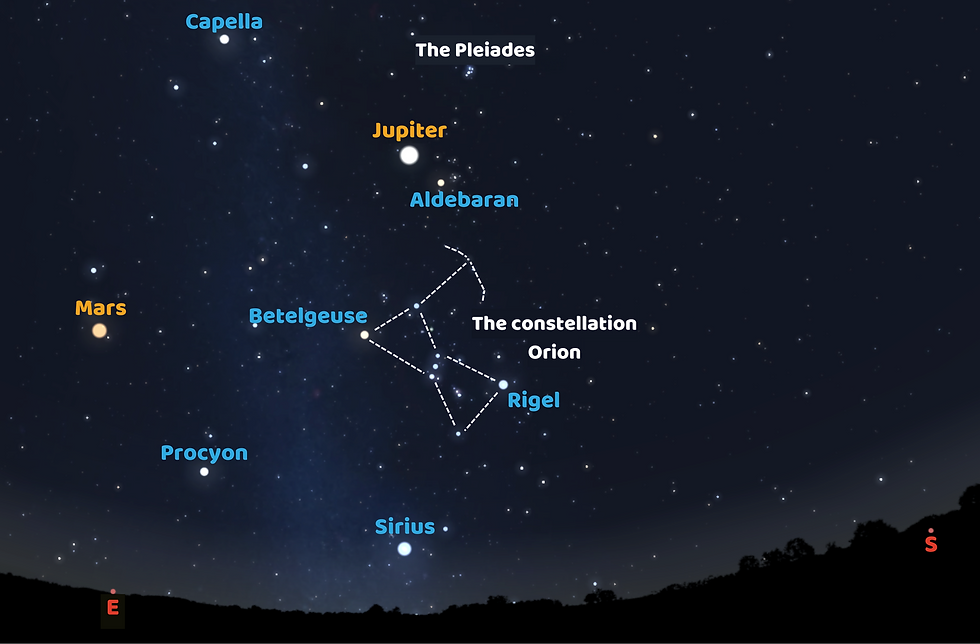Challenge: Explore the Sky 2024-2025
- Discover the Universe

- Nov 30, 2024
- 6 min read
Updated: Jan 20, 2025
Our annual Observational Challenge is back!
During the months of December 2024 and January 2025, we invite you to discover the sky. There are so many beautiful things to see when you take the time to look up! With this challenge, you will have the chance to observe the Moon in several of its phases, the planets Venus, Saturn, Jupiter and Mars as well as identify several stars and constellations!
Here you will find information on the different observations to be made and the best times to do them.
SPECIAL INVITATION TO TEACHERS AND EDUCATORS!
Register for our challenge to receive additional educational material that will allow you to complete this Challenge with your students and learn more about the celestial objects and phenomena. You will also be introduced to exoplanets! This activity is presented in collaboration with the Trottier Institute for Research on Exoplanets in Montreal!
You can download the Challenge Sheet to note your observations. If you're lucky with the weather and manage to fill it, you can use another one or any simple observational journal.
Click the image above to download the Challenge Sheet (PDF).
The Proposed Observations
NOTE: These observations are visible throughout southern Canada and at similar latitudes (such as Europe). Some of them could be a challenge under more northern latitudes. Contact us if you have any questions!
Care to see the Moon? Check out 1, 3, 5, 6, and 9.
Or perhaps a planet? Check out 6, 8, 9 and 10.
Maybe a constellation? Check out 2 and 4.
How about individual stars? Check out 2.
Or maybe a beautiful feature of the Moon or Sun? Check out 1 and 7.
Click on the arrow of each item to see the image and the description!
1 - Waxing Crescent Moon and Earthshine 🌒
A few days after the New Moon, we can see the Waxing Crescent Moon🌒. The crescent itself is lit directly by the Sun. If you pay close attention and the conditions are good, you might also notice that the rest of the Moon is also dimly lit. This light, called earthshine, is also from the Sun, but which has been reflected by the Earth onto the Moon!
During the Challenge, the best times to observe this Waxing Crescent Moon and the earthshine are just after sunset on December 3-5, 2024, January 1-3, 2025, and January 31-February 2, 2025. Bonus this year: the Crescent Moon will be close to Venus, which is very bright!
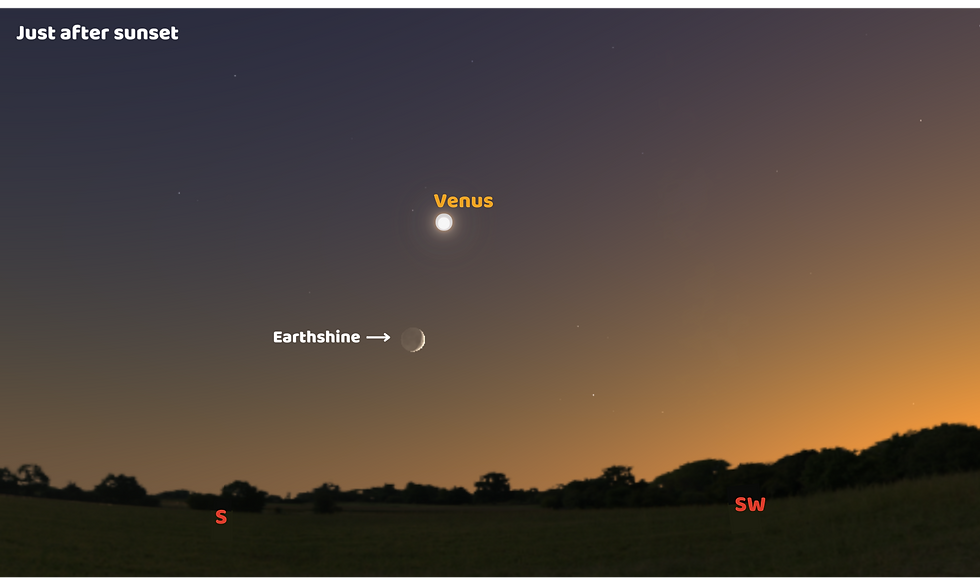
2 - The Summer Triangle: the stars Deneb, Vega, and Altair
In the west in the early evening, you can see the stars Vega, Deneb, and Altair. These are the three stars that form the Summer Triangle. Deneb is part of the Cygnus constellation which looks like a cross.
During this Challenge, see if you can locate this out-of-season triangle around sunset! The best time to observe this is in the early evening on any day in December.

3 - First Quarter Moon 🌓
In early December, January, and February, a few days after the Waxing Crescent Moon, a First Quarter Moon will be visible in the sky in the afternoon and early evening. During the First Quarter Moon, the Moon’s shape will slightly resemble a capital “D” in the sky.
During this Challenge, see if you can catch the First Quarter Moon! The best days to observe this are December 8, 2024, January 6, 2025, and February 5, 2025.
During sunset in December, you will be able to observe Saturn just to the west of the Moon. If you’re observing in January, try to observe slightly later in the night; you will see the Moon as well as three planets (Jupiter to the East, Saturn and Venus to the West) make a line across the sky! In February, the First Quarter Moon will be right beside the star cluster the Pleiades in the sky.
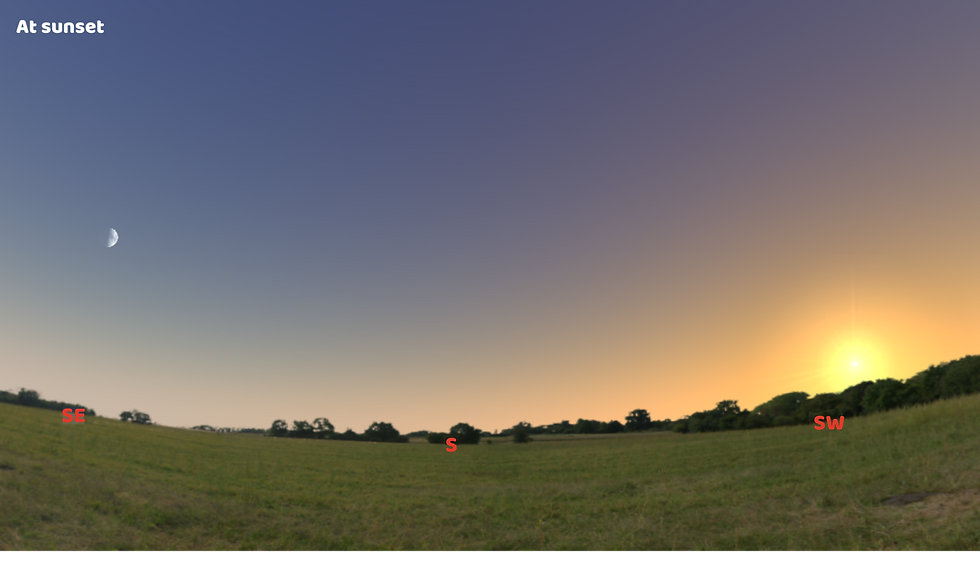
4 - The constellations Cassiopeia and Ursa Major
The constellation Cassiopeia is one of the first constellations that we usually learn to identify. It's named after a queen in Greek mythology, but in the sky, it looks more like a "W" or an "M". Between November and January, in the early evening, Cassiopeia is close to the zenith, the point directly above our heads. Just below when looking north, and if your horizon is clear, you can spot the famous Big Dipper part of the constellation Ursa Major! Between the two is Polaris, the North Star.
During this Challenge, see if you can locate this pair of constellations! Both Cassiopeia and Ursa Major will be visible every night, from sunset to sunrise.
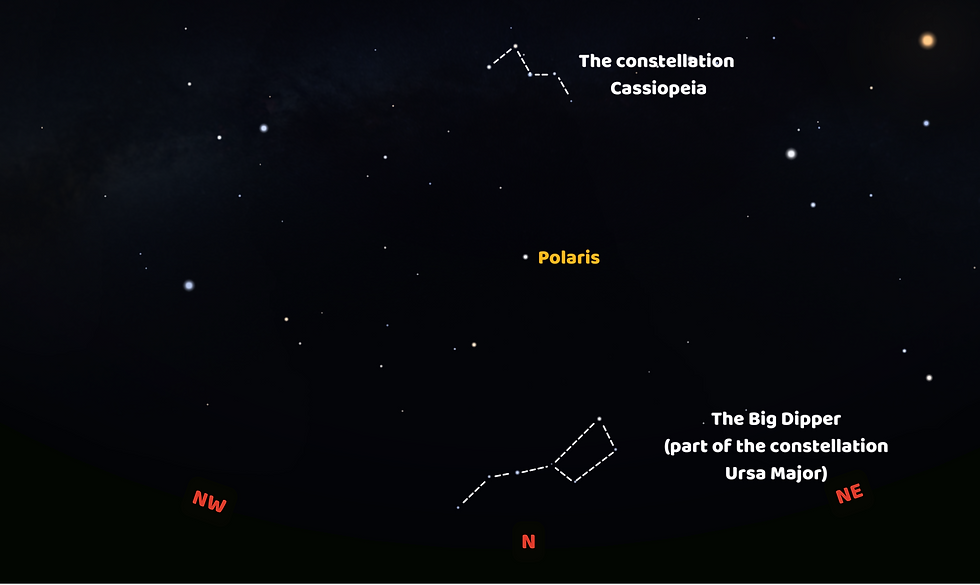
5 - Last Quarter Moon 🌗
During the Last Quarter Moon, the lit portion of the Moon sort of looks like a filled-in letter C 🌗. It rises late at night, around midnight. You can actually still see it in the early morning —look southwest!
During this Challenge, the best times to look for this Last Quarter Moon are December 22, 2024, and January 21, 2025 in the morning.
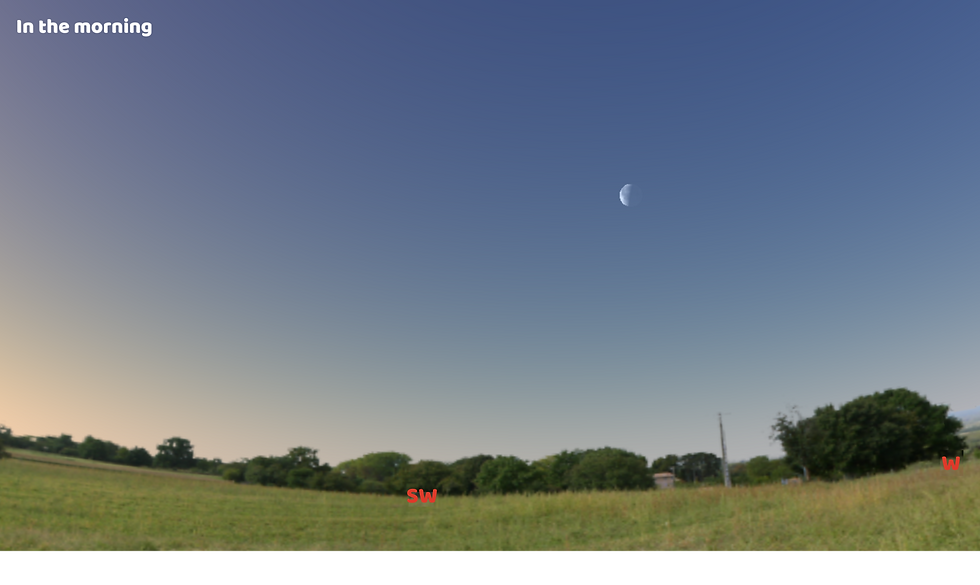
6 - Saturn, Venus, and a sliver of the Moon 🌒
In early January, Saturn, Venus, and a sliver of the Moon will line up in our night sky. In the south-western sky just after sunset, you can see this alignment of the Moon in its Waxing Crescent phase and two radiant planets in our Solar System!
During this Challenge, see if you can catch this spectacular sight! The best times to observe this alignment are for a few hours after sunset in the south-western sky between January 2-5, 2025.
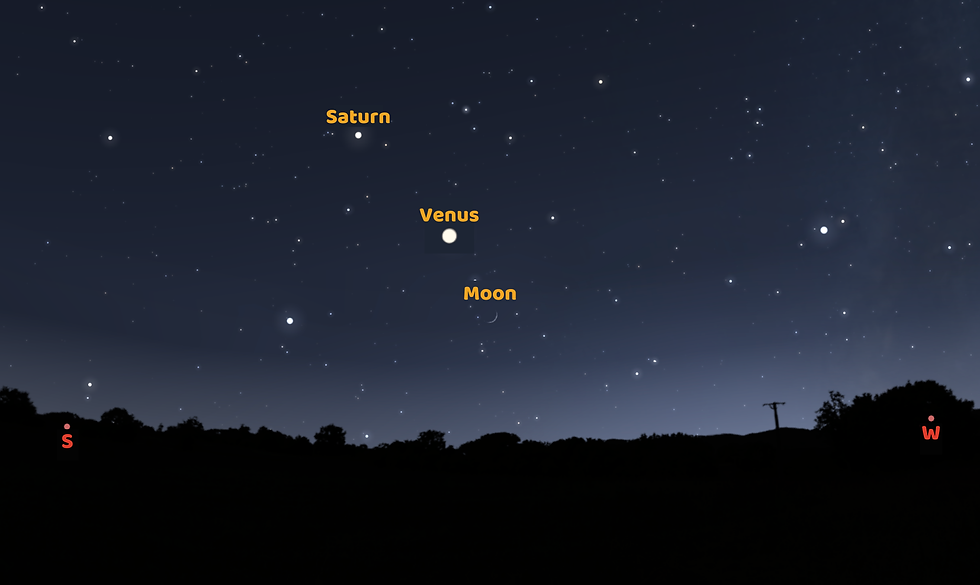

7 - A sunset
A day when there are not too many clouds, find the Sun at the end of the day. Did you notice the time? The Sun sets very early in winter! In which direction was it? Record your observations!
⚠️⚠️ Be careful, never look at the Sun directly, even when it sets, you could damage your eyes!⚠️⚠️
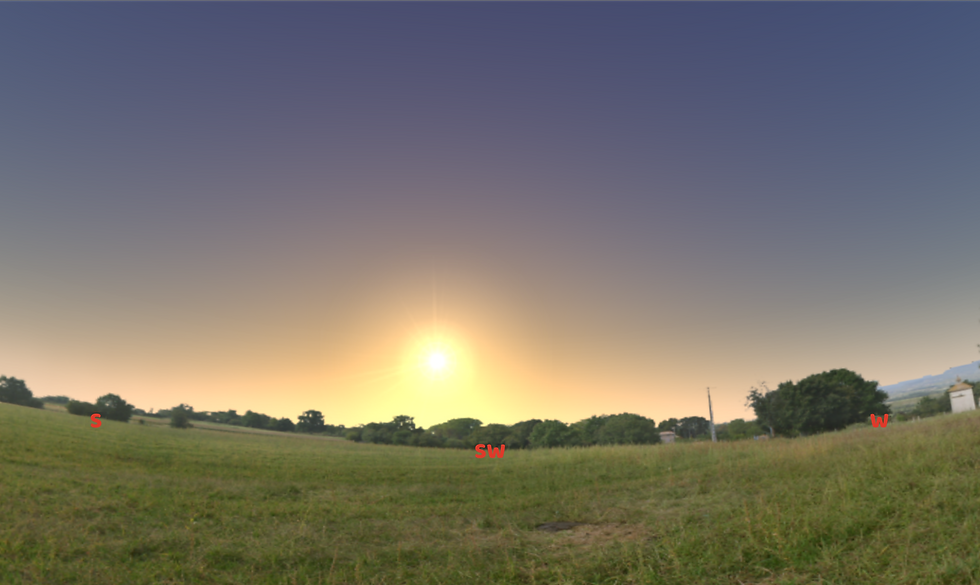
8 - Planetary Alignment 🪐
Throughout January, just after sunset, the four brightest planets will be visible in the sky at the same time: Mars, Jupiter, Saturn and Venus. Uranus and Neptune will also be in the sky, but they're only visible with telescopes.
Since the planets all orbit on the same plane in our Solar System, they always appear across the sky on the same line, called the ecliptic. It's not uncommon for several planets to be visible at the same time in the night sky along this path.
During this challenge, see if you can spot this planetary alignment! In January, the fours planets visible to the naked eye will spread across the sky, with: Mars on the eastern horizon, Jupiter slightly higher in the sky, and Venus and Saturn on the western side of the sky. Be sure to observe this alignment in the few hours after sunset, before Venus disappears below the horizon.

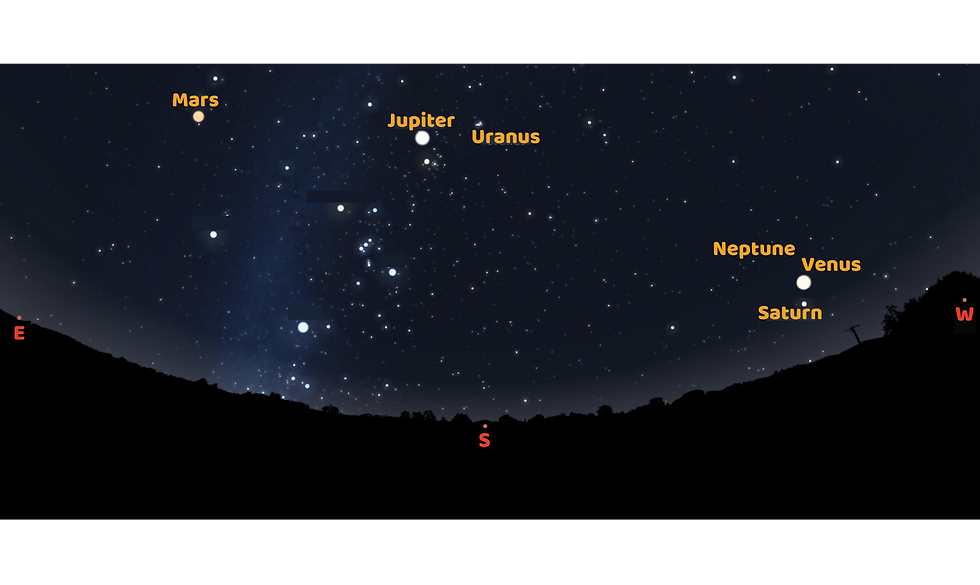
9 - Full Moon 🌕
The Full Moon in winter is very spectacular since on top of being very bright, it's also high in the sky and lights the landscape. The Moon rises in the evening and sets in the morning.
During this challenge, see if you can observe the Full Moon in the evening, when it is in the east. The best days to observe this Moon phase are December 14-16, 2024, and January 12-14, 2025.
If you’re observing the Full Moon on January 13, 2025, you’re in for a treat: from sunset to sunrise, both the Moon and Mars will move across the sky together, and for a brief time a few hours after sunset, Mars will disappear behind the Moon!

10 - Mars and Jupiter
Catch two of the brightest objects in the night sky! The planet Jupiter dominates the eastern evening sky; it’s so bright it's sure to catch your eye! And in December, while you have to wait a few hours after sunset before Mars appears, it will be visible early in the evening come January.
These the two planets will be bright throughout January, and should be very easy to identify. This is why it's best to have your students wait to make these observations until the new year. Comparing Jupiter and Mars, you'll notice that Mars does appear to be slightly red!
Note: On January 16, Mars will be in opposition in the sky. When Mars is in opposition, it means Mars is on one side of Earth while the Sun is on the opposite side. This alignment brings Mars closest to Earth, making it appear brighter and larger in the sky. The term "opposition" comes from this positioning, where Mars and the Sun are on opposite sides of Earth. This means Mars will be shining its brightest for the next two years!
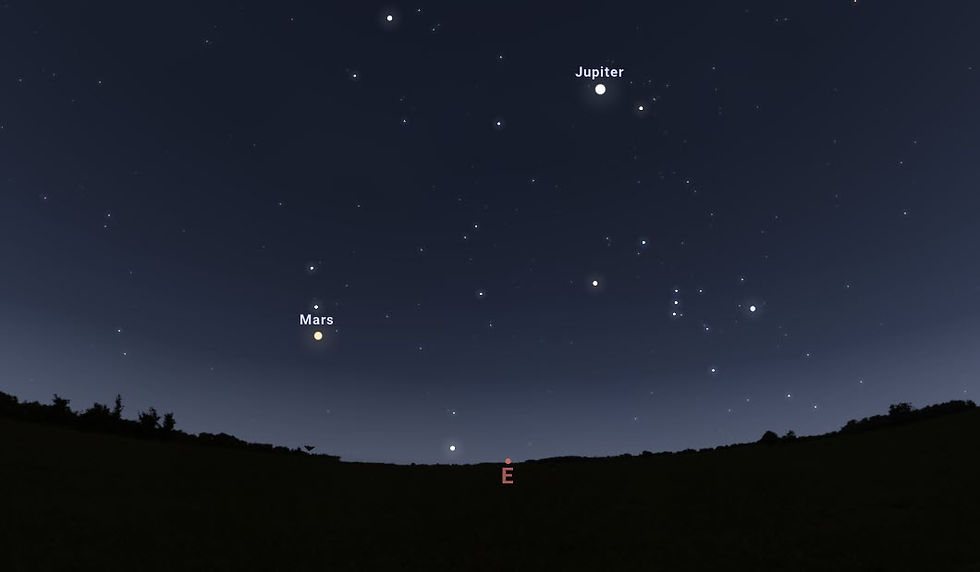
Bonus Observation
There are so many beautiful bright stars in the sky in winter! If you managed to spot Jupiter and Mars, try to find the stars labeled in blue in this image. It shows the view looking southeast in early evening.
You can also see the beautiful constellation Orion. Its shape resembles an hourglass and it is relatively easy to spot with its belt formed of three stars with a similar brightness. It's the main winter constellation!
